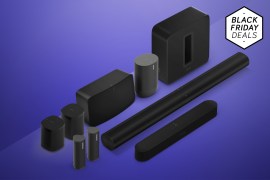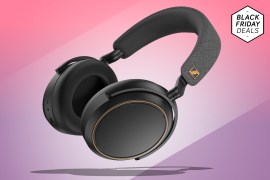Dyson OnTrac review: wonderful design and super sound with some caveats
Dyson's noise-cancelling headphones offer unique personalisation and while the design work is terrific, there are some compromises inside

Stuff Verdict
With superb design, battery life and sound, the Dyson OnTrac should be up there with the best – but the core hardware is compromised.
Pros
- Superb design and customisation options
- Great sound quality
- One of the best for ANC
- Ace bass response
Cons
- No spatial audio/Dolby Atmos
- No lossless audio capability
- No multipoint Bluetooth (Bluetooth 5.0 now outdated)
- Costly
Remember Dyson Zone, the somewhat bizarre air-purifying headphones? Dyson was laying the groundwork for something a lot less whacky. And here is that product; the uniquely-named Dyson OnTrac. Gone is the purifying bit, replaced by a quite stunning and unique industrial design.
And I guess I did see it coming – in an interview session at the time of the Dyson Zone launch, Dyson engineers were clear that the Zone was just the start of the company’s journey into audio products.
But at $499/£450 the OnTrac is predictably highly priced and they need to be good – very good – to justify this kind of outlay beyond the market leaders costing significantly less, notably Sony’s WH1000-XM5s. It’s hardly an easy market for Dyson to impose itself on when premium noise-cancelling headphones occupy such a competitive space.
Of course, Dyson would say it is offering more in terms of design and we’ll come onto that in just a moment. Apple’s AirPods Max may be ageing and surely soon replaced, but their similar $500/£500 price point has certainly inspired other manufacturers to charge prices in the $400-$500 bracket as we saw in the case of the recent Sonos Ace. And that’s no different here – like all Dyson gear, the OnTrac are priced to make a profit.
How we test headphones
Every pair of earphones and headphones reviewed on Stuff is used for a minimum of a week’s worth of daily listening. We use a playlist of test tracks made up of multiple genres to assess sound, and use our years of experience to compare to other models. Manufacturers have no visibility on reviews before they appear online, and we never accept payment to feature products.
Find out more about how we test and rate products.
Design
The overall design of the Dyson OnTrac is certainly distinct and is a typical extreme Dyson design. They’re bold – with huge ear caps and colourful cushions, available in four different default designs:
- CNC aluminium – our pick of the bunch with a silver finish and bright yellow ear cushions (our review model).
- CNC copper – copper ear cups with a blue headband and ear cushions.
- Ceramic Cinnabar – this one is different as the earcups and headband are ceramic rather than metallic. The default colour is a sort of rust-red.
- CNC black nickel – black headband, black aluminium earcups and black headband.
One of the things we can see putting off potential buyers is the rather chunky headband but there’s a reason for it – that’s where the long-life batteries are held and the weight is distributed nicely.
One thing we can certainly say after many hours of prolonged listening is that they are remarkably comfortable. We have worn them during some very hot days though and we have to say the earcups get a tad sweaty. It’s a legitimate question as to whether the headphones will keep their lustre, but that’s a thought for another day.
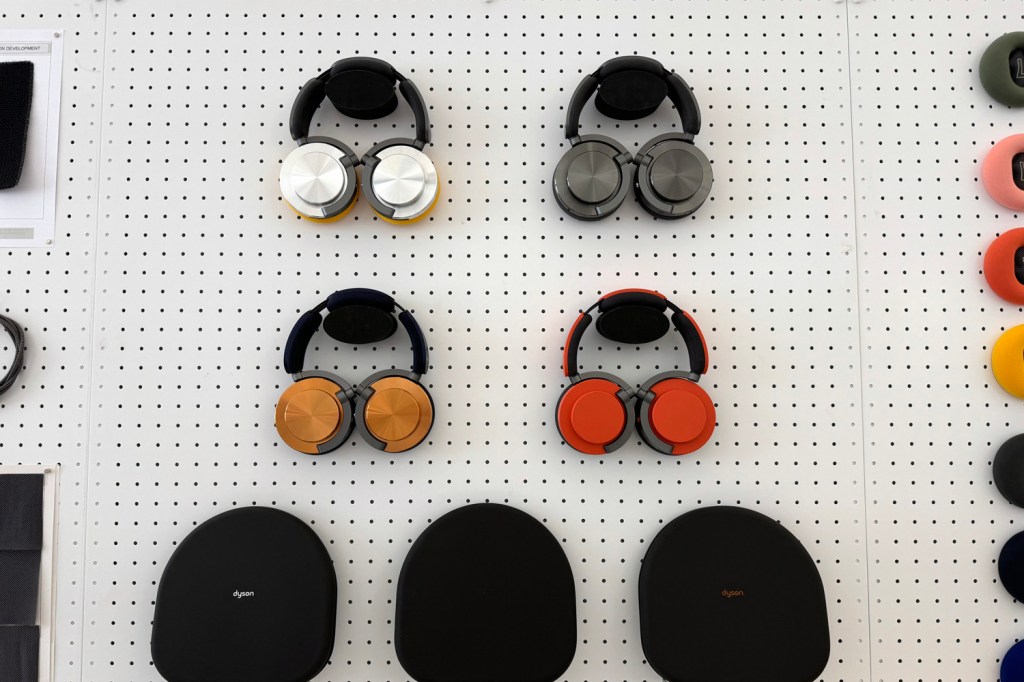
They should seem heavy at 451g, which compares to the AirPods Max at 385g and Sonos Ace at 312g. But they don’t feel that heavy because of the weight distribution of the batteries in the headband – however, the Sonos Ace are clearly ahead here.
The design is suitably premium and the effect of years of prototyping is clearly in evidence. They also have a brilliant feature that really sets them apart from rivals – you can customise the design. That’s because you can step beyond what’s provided in the box by default and add different removable ear caps and/or microfibre ear cushions that can be snapped on and off at will.





They’re easily bought separately for $50/£50 from Dyson’s website and there’s a link to do so in the associated app. In all there are over 2000 colour combos to choose from. There’s no doubt this is a highly impressive facet of these headphones and I absolutely love the idea of it.
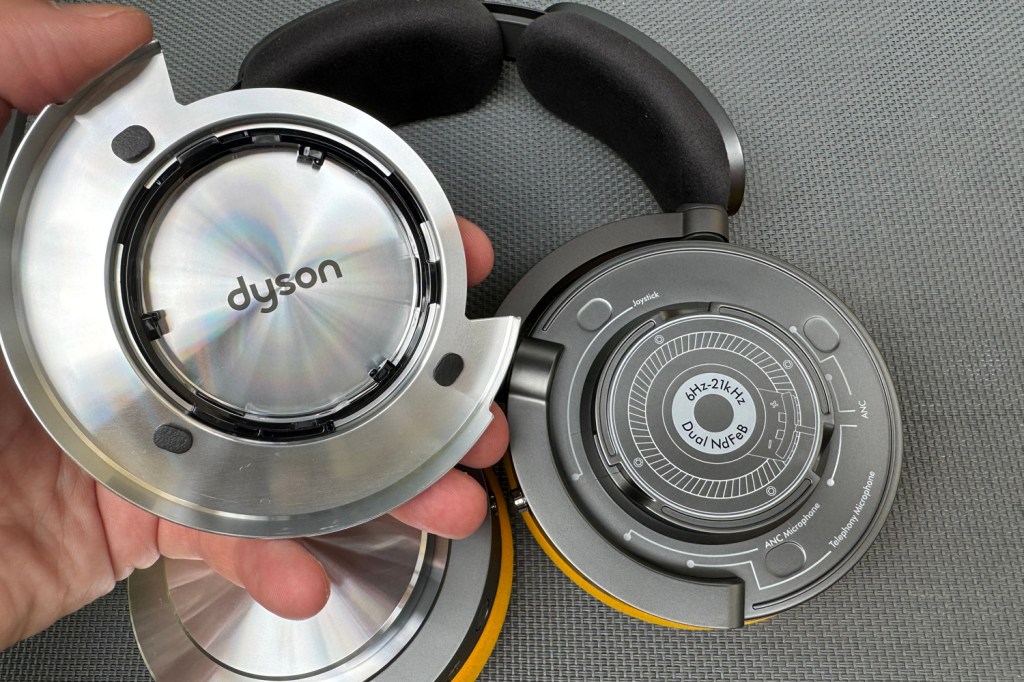
The OnTrac come in a soft case which stretches across the headphones when they are folded flat. This is a surprisingly good solution even though it doesn’t completely encase them. There’s no fiddly zip though which is a good thing and the case can go flat-as-a-pancake when not in use.
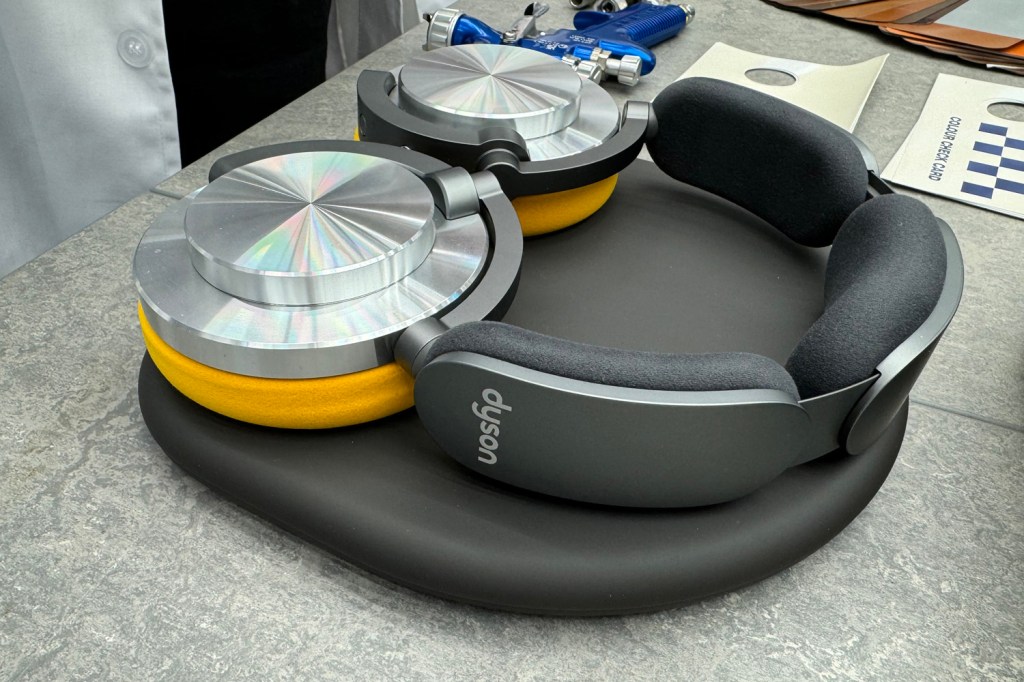
Features and battery life
While these headphones are highly capable in terms of audio quality and noise-cancelling – as we’ll talk more about below – they are missing a few features that should be standard for a pair of high-end noise-cancelling headphones launched in 2024.
There’s no sugar-coating it – the hardware inside the OnTrac is outdated, especially for premium headphones, using Bluetooth 5.0 where many devices are up to 5.3 or 5.4. As a result, there’s a lack of some features. There’s no support for lossless (even if you would possibly have to cable them up for this). There’s no support for spatial audio/Dolby Atmos. And there’s no multipoint Bluetooth.
The company wouldn’t confirm in a briefing which chipset was being used, but we know OnTrac supports SBC, AAC, and the niche LHDC in terms of codecs.
If we had to bet on it, we’d say that Dyson confirmed the hardware design of the OnTrac some time ago, with an older chipset leaving time for subsequent testing and tuning – that’s fine, but it’s not going to produce headphones that can compete with the best.
The lack of multipoint Bluetooth audio is pretty shocking at this price point – the ability to listen to audio from a tablet or laptop as well as your phone should be an absolute given if you’re spending this amount of money. And because of the older chipset, the Bluetooth range actually isn’t that great, cited at 9m/30ft. That’s not great and the audio easily drops out – say if you leave your phone and walk off down the garden.
The better story is the 55 hours of battery life – that’s absolutely stunning and means they’ll easily be happy across a few long flights or a week of work. It’s impressive – presumably as a result of the work on the more power-hungry Zone, Dyson decided to retain the batteries in the headband and as I said earlier, the weight is distributed across the length.

Sound quality
There’s no lack of sound quality on offer here, with 40mm, 16-ohm neodymium drivers capable of reproducing frequencies from as low as 6 Hertz to as high as 21,000 Hertz. The audio prowess is quite incredible across the board, with the headphones able to cope with bassier tracks so well even without the Bass Boost EQ (more below) but they are also deft enough to bring even the softest classical sounds to life. You’ll never be disappointed by the sound they can produce.
Noise cancellation is pretty good – it’s close to being as good as the best. I haven’t been on a flight while testing these headphones, so we’ll update this review with our findings there when I next travel. Dyson says it has drawn from its noise suppression experience with its other products and spent a lot of time developing the noise-cancellation, which takes place 384,000 times per second, reducing up to 40dB
There are three different EQ modes you can choose within the MyDyson app (more on the app itself shortly). These are Enhanced, which prioritises higher frequencies, Bass Boost – self explanatory – and Neutral for a balanced sound.
Controls and app
The controls are OK, but not a patch on, say, the definite controls of the Sonos Ace. Firstly, the on/off button on the left earcup works well – two seconds on and off (also used for Bluetooth pairing). Then there’s tapping on the earcup to change ANC modes. This works less well – I always find earcup controls are patchy at best.
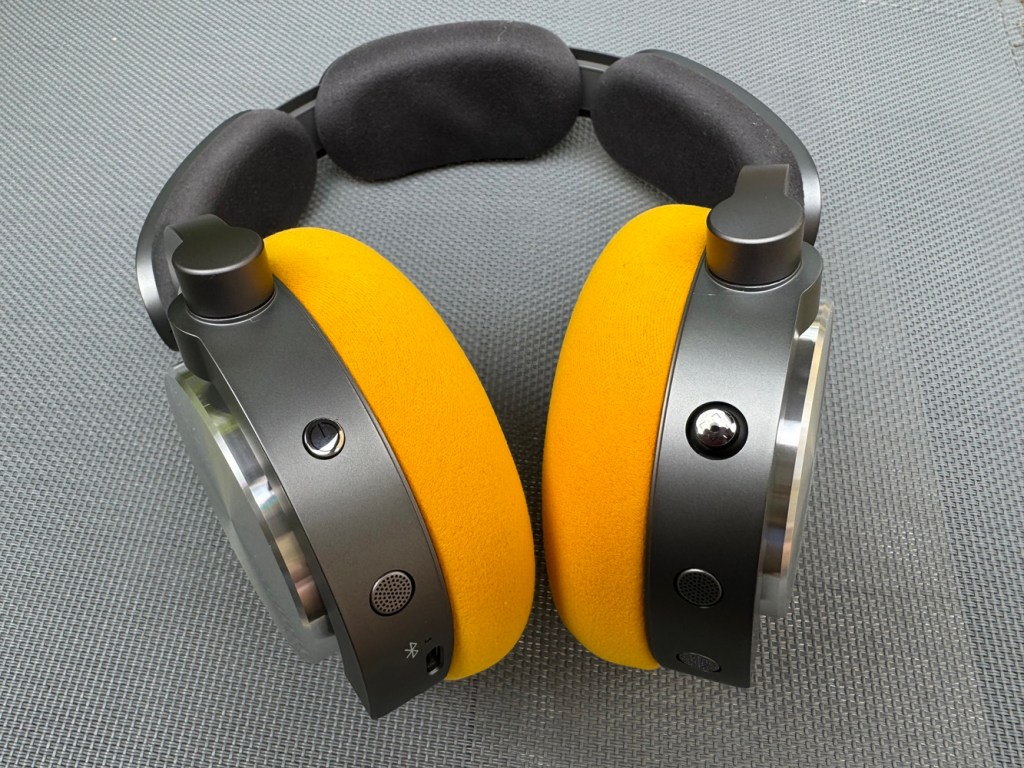
The single audio cue for switching between the noise cancelling is OK but it’s not distinct, can get lost in the music and you don’t always know which noise cancelling mode you’re in. It just isn’t obvious unless you’re surrounded by sound. There should be two tones for it. What’s more, the earcup control only switches between full isolation and transparency – the only way to turn off noise cancelling fully is in the app.
You do find yourself looking in the app to tell and that is less optimal. If you’re someone who doesn’t switch modes that much it won’t matter, but I do and it frustrated us.
On the right earcup there’s a joystick for play/pause and volume. This is mostly OK but it is small. It’s fine for play/pause but adjusting the volume is a little more fiddly and it’s easy to pause your track when you
One thing that works brilliantly is the auto-play and pause when you remove the headphones. Too often this doesn’t work all the time with rivals but that isn’t a problem here.
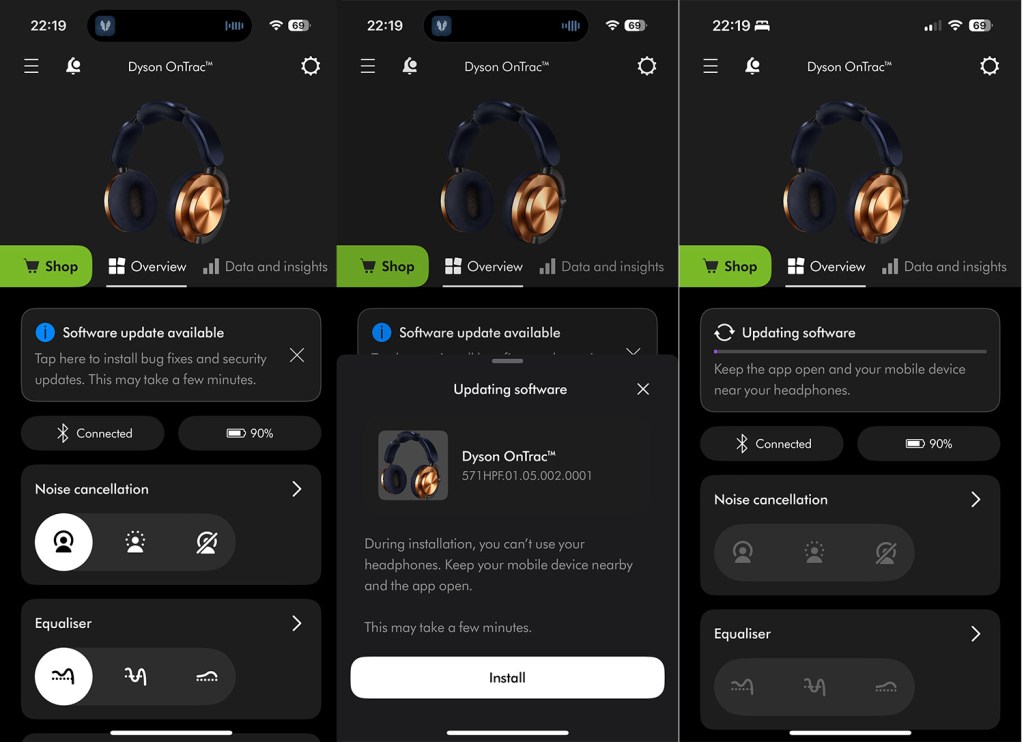
App-wise the Dyson OnTrac use the standard MyDyson app used by the company’s other products such as its fans and vacuums. This is fine, but it’s not that straightforward to switch between the products, so if you regularly use it for OnTrac as well as another product, this may frustrate.
All the standard controls you’d expect are present and you can also adjust the EQ as I mentioned in the audio section above.
‘Ear health’ is also something Dyson has talked about around these headphones and the sound exposure graph in the app – complete with environmental dB measurements – is a clue towards where Dyson might be headed – we’d not be surprised if it produces some hearing aid devices over the next couple of years.

Dyson OnTrac verdict
There are several things I absolutely love about the Dyson OnTrac – the incredible battery life, the great comfort and the general audio quality and noise-cancelling. And that’s before you get to the wonderful idea of easy customisation that’s right out of the land of Nokia Xpress-On covers. The app is pretty good too. But the price is high and for such a decision, the hardware inside also needs to match – it doesn’t, and that’s a real shame.
Stuff Says…
With superb design, battery life and sound, the Dyson OnTrac should be up there with the best – but the core hardware is compromised.
Pros
Superb design and customisation options
Great sound quality
One of the best for ANC
Ace bass response
Cons
No spatial audio/Dolby Atmos
No lossless audio capability
No multipoint Bluetooth (Bluetooth 5.0 now outdated)
Costly
Dyson OnTrac tech specs
| Materials | Aluminum, microfibre cushions |
| Audio | 40mm, 16-ohm neodymium drivers – 6Hz to 21,000Hz |
| Microphones | 8 x ANC mics, 1 x telephony |
| Wireless | Bluetooth 5.0 |
| Battery | Up to 55 hours, 30 min fast charge for 9 hours, 10 minute charge for 2.5 hours, USB-C |
| Dimensions | 261 x 201 mm |
| Weight | 451g |


